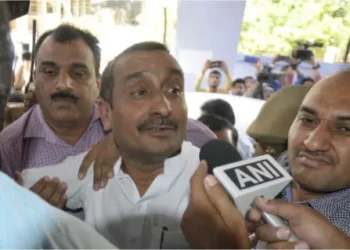India is now ramping up its defense capabilities in response to growing threats from neighboring countries like China and Pakistan. With Pakistan boasting 11 early warning aircraft and China maintaining around 30, India trails behind with just three.
However, India is pushing forward to bridge this gap with plans to develop and induct 12 more advanced airborne early-warning and control (AEW&C) aircraft, also known as “eyes in the sky.”
The Defense Research and Development Organization (DRDO) and the Indian Air Force (IAF) are working on programs to develop six Mark-1A and six Mark-2 versions of the Netra AEW&C aircraft. These aircraft will significantly enhance India’s surveillance and detection capabilities along the borders of China and Pakistan and provide crucial support during air combat operations.
The Mark-1A aircraft will have advanced radar and electronic intelligence systems mounted on Brazilian Embraer jets. These enhancements will enable better coverage and more advanced technologies, ensuring improved surveillance capabilities.
Meanwhile, the Mark-2 aircraft, at an advanced stage of development, will feature even more capable versions of the AEW&C radars and sensors mounted on second-hand Airbus-321 planes acquired from Air India. These aircraft will provide enhanced radar coverage and deliver critical technological advancements.
The DRDO-IAF combine is actively pushing ahead with progammes to develop six Mark-1A as well as six Mark-2 versions of the Netra AEW&C aircraft, three of which were earlier built and inducted from February 2017 onwards.
— Yusuf Unjhawala 🇮🇳 (@YusufDFI) February 6, 2024
Also read – India to get more fighter jets as procurement of 97 Tejas aircraft gets clearance
Why is this technology important for a potent Air Force?
The significance of such cutting-edge technology in 21st-century warfare cannot be overstated. In modern conflicts, having superior surveillance and detection capabilities is crucial for maintaining situational awareness and responding effectively to threats. Integrating advanced AEW&C aircraft into India’s defense infrastructure will bolster the country’s ability to monitor airspace, detect incoming threats, and coordinate tactical responses.
With Pakistan and China significantly ahead in AEW&C and Airborne Warning and Control System (AWACS) capabilities, India recognizes the urgent need to bridge this technological gap. The ongoing tensions with China in eastern Ladakh and past confrontations with Pakistan underscore the importance of investing in advanced defense technologies.
In conclusion, India’s decision to add more “eyes in the sky” reflects its commitment to enhancing national security and addressing emerging threats. India aims to strengthen its defense posture and ensure readiness to tackle evolving security challenges by bolstering its surveillance and detection capabilities.













